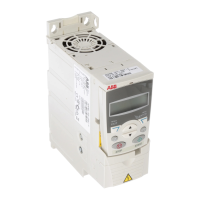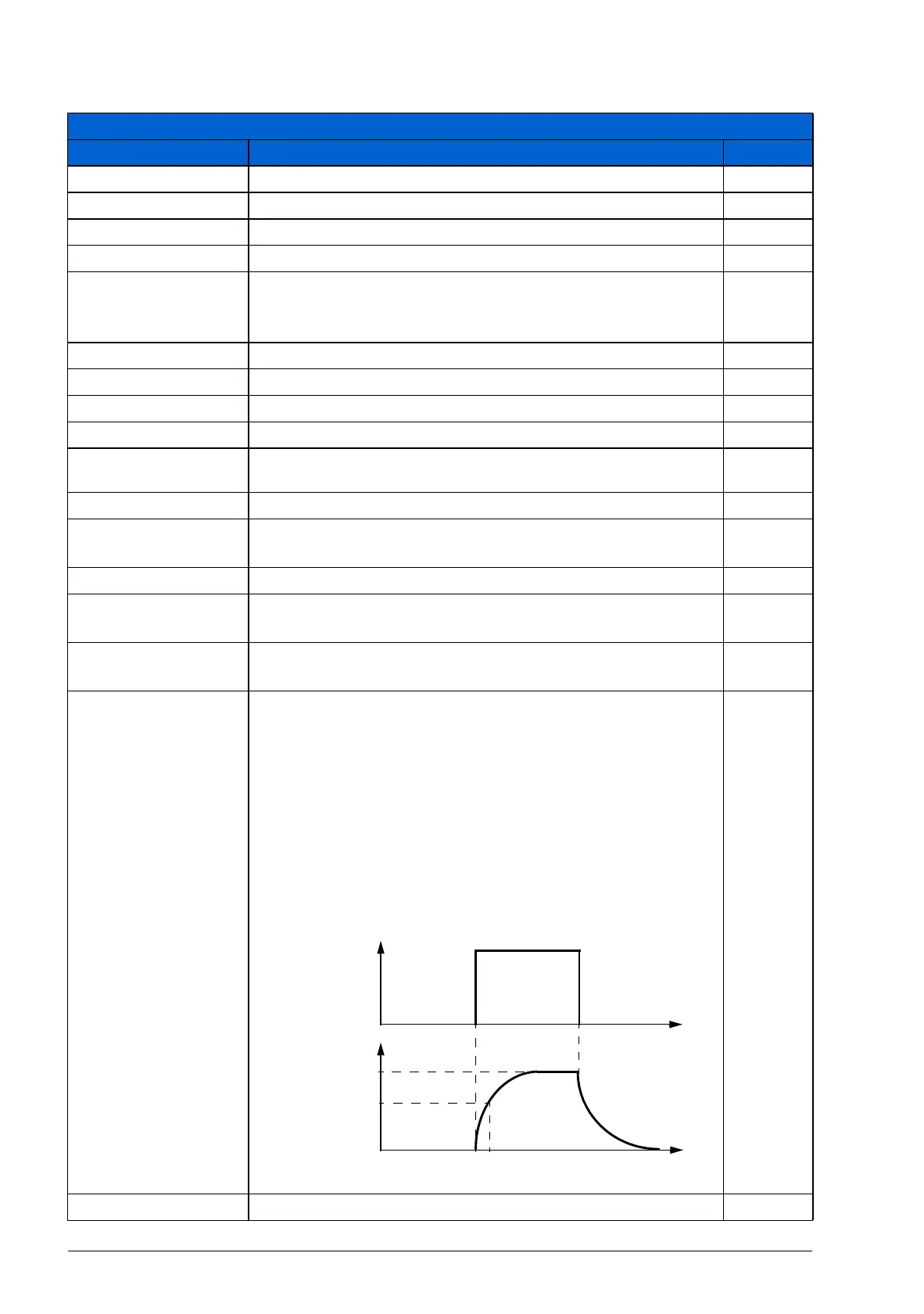240 Actual signals and parameters
DI2 See selection DI1.2
DI3 See selection DI1.3
DI4 See selection DI1.4
DI5 See selection DI1.5
DI1(INV) External fault indication through inverted digital input DI1. 0:
Fault trip on EXT FAULT 1 (0014). Motor coasts to stop. 1:
No external fault.
-1
DI2(INV) See selection DI1(INV).-2
DI3(INV) See selection DI1(INV).-3
DI4(INV) See selection DI1(INV).-4
DI5(INV) See selection DI1(INV).-5
3004 EXTERNAL
FAULT 2
Selects an interface for an external fault 2 signal. NOT SEL
See parameter 3003 EXTERNAL FAULT 1.
3005 MOT THERM
PROT
Selects how the drive reacts when the motor
overtemperature is detected.
FAULT
NOT SEL Protection is inactive. 0
FAULT The drive trips on fault MOT OVERTEMP (0009) when the
temperature exceeds 110 °C, and the motor coasts to stop.
1
ALARM The drive generates alarm MOTOR TEMP (2010) when the
motor temperature exceeds 90 °C.
2
3006 MOT THERM
TIME
Defines the thermal time constant for the motor thermal
model, ie the time within which the motor temperature has
reached 63% of the nominal temperature with steady load.
For thermal protection according to UL requirements for
NEMA class motors, use the rule of thumb: Motor thermal
time = 35 · t6. t6 (in seconds) is specified by the motor
manufacturer as the time the motor can safely operate at six
times its rated current.
Thermal time for a Class 10 trip curve is 350 s, for a Class
20 trip curve 700 s, and for a Class 30 trip curve 1050 s.
500 s
256…9999 s Time constant 1 = 1 s
All parameters
No. Name/Value Description Def/FbEq
}
Motor load
Temp. rise
100%
63%
Par. 3006
t
t

